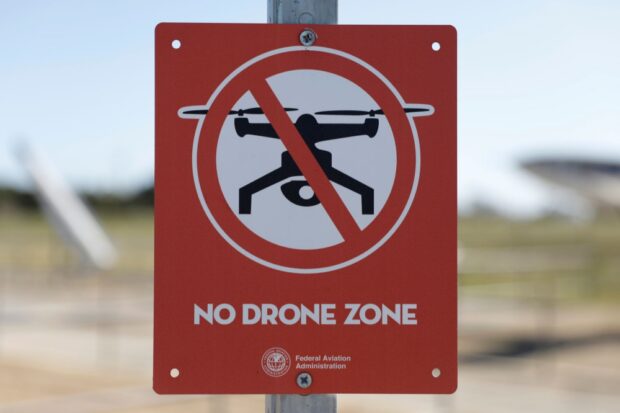A U.S. Appeals Court on Friday upheld rules set by the Federal Aviation Administration (FAA) requiring drones to have remote identification technology to enable them to be identified from the ground.
The rules, which were finalized in April 2021, give drone manufacturers 18 months to begin producing drones with so-called Remote ID and are aimed at safely managing the growing use of drones in U.S. airspace.
The U.S. Appeals Court for the District of Columbia turned away a legal challenge from a drone operator and others who argued the rule “amounts to constant, warrantless governmental surveillance.”
RaceDayQuads and its owner, Tyler Brennan, sued the agency, claiming that the Remote Identification Rule amounts to “constant, warrantless governmental surveillance” in violation of the Fourth Amendment. Brennan claims that law enforcement could use the electronic license plate to carry out continuous surveillance of the drone pilots’ public locations or reveal the identity of the operator’s home.
The drone identification rules require they broadcast remote ID messages via radio frequency broadcast but eliminated proposed earlier requirements drones be connected to the internet to transmit location data. The FAA compares Remote ID to a “digital license plate” and says it is only detectable when the drone is in the air.
Judge Cornelia Pillard writing for the unanimous 3-0 panel said “Drones are coming. Lots of them. They are fun and useful. But their ability to pry, spy, crash, and drop things poses real risks. Free-for-all drone use threatens air traffic, people and things on the ground, and even national security.”
That concern prompted Congress in 2016 to direct the FAA to write rules on drone identification, Pillard noted.
She rejected arguments it was tantamount to illegal surveillance.
“Requiring a drone to show its location and that of its operator while the drone is aloft in the open air violates no reasonable expectation of privacy,” Pillard wrote.
Separately, Senators Gary Peters, who chairs the Homeland Security Committee, and Republican Ron Johnson, Friday introduced legislation to boost U.S. government authority to counter drone threats.
Congress in 2018 expanded Justice Department and Homeland Security Department authority to disable or destroy threatening drones. The bill would renew that authority set to expire in October and extend powers to destroy or disable threatening drones to the Transportation Security Administration (TSA) for airports.
DHS official Samantha Vinograd said this month that since 2021, the TSA “reported nearly 2,000 drone sightings near U.S. airports, including incursions at major airports nearly every day.” A drone sighting near Washington National Airport last week briefly caused a halt to flights.
The case is Brennan v. Dickson, D.C. Cir., No. 21-01087, 7/29/22.
Photo: A Federal Aviation Administration (FAA) sign warns against the use of civilian drones outside Point Mugu Naval Air Station (NAS) near Oxnard, California, U.S., March 29, 2022. REUTERS/Chris Helgren
Sources: Reuters; Bloomberg Law

